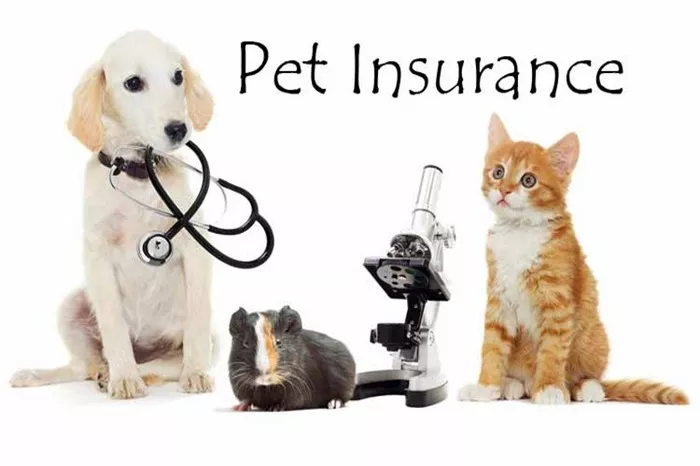Cat insurance provides pet owners with financial protection against unexpected veterinary expenses. Just like health insurance for humans, cat insurance helps cover the costs of medical treatments, surgeries, and medications for your feline companion. As cats age, they become more susceptible to illnesses and accidents, making insurance a valuable investment for their well-being.
Having cat insurance ensures that pet owners can provide the best possible care for their cats without worrying about the high costs of veterinary bills. It allows pet owners to make decisions based on what’s best for their cat’s health rather than financial constraints.
Comparison of Providers
When choosing the best type of cat insurance, it’s essential to compare different providers to find the one that suits your needs and budget. Here’s a comparison of some reputable cat insurance providers:
Healthy Paws: Known for its comprehensive coverage and fast claim processing, Healthy Paws offers customizable plans with unlimited lifetime benefits. They cover accidents, illnesses, hereditary conditions, and alternative therapies.
Trupanion: Trupanion provides lifetime coverage for illnesses and accidents with no payout limits. They offer a simple deductible structure and direct payment to veterinarians, making the claims process hassle-free.
Petplan: Petplan offers customizable plans with coverage for accidents, illnesses, and hereditary conditions. They provide coverage for dental illness and alternative therapies, along with a straightforward claims process.
see also: How does working from home affect my home insurance?
Coverage Options
Cat insurance plans typically offer the following coverage options:
Accident-Only: Covers medical expenses resulting from accidents, such as broken bones or ingestion of foreign objects.
Illness: Covers medical treatments for illnesses like urinary tract infections, diabetes, or cancer.
Wellness: Optional coverage for routine care, including vaccinations, annual exams, and preventive treatments.
Comprehensive: Combines accident and illness coverage with optional wellness benefits for comprehensive protection.
Cost Analysis
The cost of cat insurance varies depending on factors such as your cat’s age, breed, location, coverage options, and the insurance provider. On average, monthly premiums for cat insurance range from $20 to $50. Deductibles typically range from $100 to $500 per year, with reimbursement rates of 70% to 90% of covered expenses.
While premiums may seem like an additional expense, they can save pet owners thousands of dollars in veterinary bills, especially for unexpected emergencies or chronic illnesses.
Policy Limitations
It’s essential to understand the limitations and exclusions of your cat insurance policy before purchasing. Common limitations may include:
Pre-Existing Conditions: Most policies do not cover pre-existing conditions diagnosed before the policy’s effective date.
Breed-Specific Issues: Certain breeds may be prone to specific health conditions that are excluded from coverage.
Age Restrictions: Some providers have age restrictions for enrolling cats in their insurance plans, typically requiring cats to be under a certain age to qualify.
Customer Reviews and Ratings
Before choosing a cat insurance provider, it’s helpful to read customer reviews and ratings to gauge their reputation and customer satisfaction. Websites like Trustpilot, Consumer Affairs, and the Better Business Bureau provide valuable insights into other pet owners’ experiences with different insurance providers.
Look for providers with consistently positive reviews, excellent customer service, and prompt claims processing to ensure a positive experience when filing claims for your cat’s medical expenses.
Claims Process
Filing a claim with your cat insurance provider typically involves the following steps:
Gather Documentation: Collect all relevant documents, including veterinary invoices, medical records, and receipts.
Submit Claim: Complete the claim form provided by your insurance provider and submit it along with the required documentation.
Review and Processing: The insurance company will review your claim and process it according to the terms of your policy.
Reimbursement: If your claim is approved, you will receive reimbursement for covered expenses, either via direct deposit or a check in the mail.
Most reputable insurance providers offer online claim submission and fast processing times, allowing pet owners to receive reimbursement quickly.
see also: What does accidental damage cover home insurance?
Additional Resources
For further reading or assistance with choosing the best type of cat insurance, consider the following resources:
American Veterinary Medical Association (AVMA): Provides information on pet insurance and tips for selecting the right policy for your cat.
Pet Insurance Review: Offers impartial reviews and comparisons of different pet insurance providers to help pet owners make informed decisions.
Consultation with Veterinary Professionals: Veterinarians and veterinary staff can offer guidance and recommendations based on your cat’s specific health needs.
Taking the time to research and compare cat insurance options ensures that pet owners can provide the best possible care for their feline companions while protecting their finances from unexpected veterinary expenses.
Conclusion
The best type of cat insurance is one that offers comprehensive coverage, flexible options, and reliable customer service. By comparing providers, understanding coverage options, and considering cost and policy limitations, pet owners can make an informed decision to safeguard their cat’s health and well-being.
FAQs about Cat Insurance
1. What Kind of Insurance Do I Need for My Cat?
The primary type of insurance you need for your cat is pet insurance. Pet insurance for cats typically covers veterinary expenses for illnesses, accidents, and preventive care. It helps offset the cost of unexpected medical treatments and ensures your cat receives prompt medical attention when needed.
2. Is It Worth Getting Cat Insurance?
Whether cat insurance is worth it depends on your financial situation, your cat’s health, and your willingness to pay for veterinary care out of pocket. Here are some factors to consider:
Cost of Veterinary Care: If you’re concerned about the potential cost of veterinary treatments for your cat, insurance can provide peace of mind and help manage expenses.
Health History: If your cat has pre-existing conditions or is prone to certain health issues, insurance can be particularly beneficial.
Budget: Evaluate the cost of insurance premiums versus potential veterinary expenses to determine if it’s worth it for your situation.
3. What to Look Out for in Cat Insurance?
When choosing cat insurance, consider the following factors:
Coverage: Ensure the policy covers illnesses, accidents, and preventive care. Look for optional coverage for hereditary and congenital conditions.
Exclusions: Understand what is excluded from coverage, such as pre-existing conditions, routine wellness exams, and certain treatments.
Deductibles and Limits: Check the deductible amount and any coverage limits to determine your out-of-pocket expenses.
Claim Process: Evaluate the ease of filing claims and the reimbursement process.
Provider Reputation: Choose a reputable insurance provider with a history of good customer service and prompt claims processing.
4. How Much Is Pet Insurance in Hong Kong?
The cost of pet insurance in Hong Kong varies depending on factors such as the age and breed of your cat, coverage limits, deductible amount, and the provider you choose. On average, pet insurance premiums for cats in Hong Kong can range from HK$200 to HK$800 per month. It’s advisable to compare quotes from different insurance providers and consider the coverage options to find a policy that fits your budget and meets your cat’s needs.
You Might Be Interested In





















